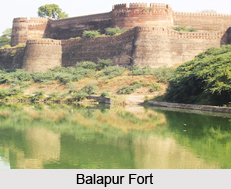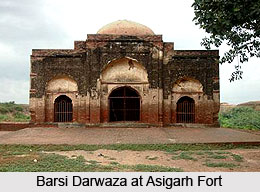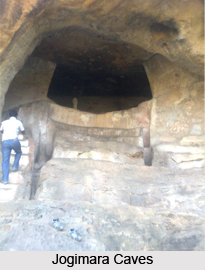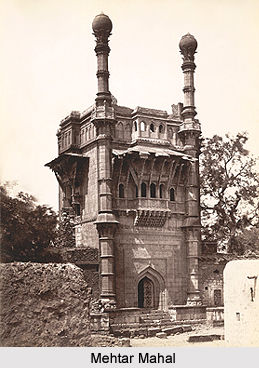 The architecture of Bijapur Fort is influenced by the Turkish, Ottoman and Persian architectural style. The fort and the citadel were constructed in 1565 by Yusuf Adil Shah and were further developed during the reign of the Adil Shahi dynasty. The fort includes various buildings like, fortifications, tombs, mosques, temples, palaces, gardens etc. Some of the major structures in the fort are Jal Mahal, Dilkusha Mahal (Mahatar Mahal), Taj Bavdi (Chand Bavdi), Gagan Mahal palace, Malikah-e- Jahan Mosque, tomb of Ali Rauza, Jumma mosque (Jamia Masjid), Arkilla (Citadel) and others. The Dattatreya Temple, located towards the west of the fort, was built by Ibrahim II.
The architecture of Bijapur Fort is influenced by the Turkish, Ottoman and Persian architectural style. The fort and the citadel were constructed in 1565 by Yusuf Adil Shah and were further developed during the reign of the Adil Shahi dynasty. The fort includes various buildings like, fortifications, tombs, mosques, temples, palaces, gardens etc. Some of the major structures in the fort are Jal Mahal, Dilkusha Mahal (Mahatar Mahal), Taj Bavdi (Chand Bavdi), Gagan Mahal palace, Malikah-e- Jahan Mosque, tomb of Ali Rauza, Jumma mosque (Jamia Masjid), Arkilla (Citadel) and others. The Dattatreya Temple, located towards the west of the fort, was built by Ibrahim II.
The Bijapur Fort and the citadel were constructed in 2 concentric circles. The fortress at the middle of the concentric circles has a circumference of 400 m and the east west axis of the fort is 3 km. The fortifications include 96 bastions which were built in different designs. The fort consists of 5 major entranceways which also have 10 more bastions. These main gateways are well decorated and arch shaped. There is also a 50 feet wide moat that surrounds the entire fort. It is around 50 feet high and the width from bastion to bastion is 25 feet. The walls are battlemented and are almost 10 ft in height.
The 5 main gateways in the Bijapur Fort are known as the Fateh gate (on the south east); the Allahpur gate (on the east); the Bahmani gate (on the north), the Shahapur gate (at the north-west corner); and the Makka gate (on the west).
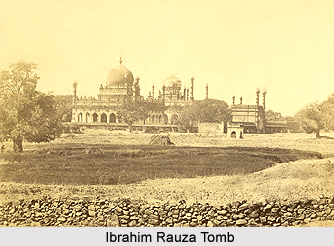 During the reign of the Adil Shahi dynasty on the Bijapur sultanate, the fortress was strongly fortified and around 1000 iron and brass canons were installed. There was also a palace inside the fort which was surrounded by 2 separate moats.
During the reign of the Adil Shahi dynasty on the Bijapur sultanate, the fortress was strongly fortified and around 1000 iron and brass canons were installed. There was also a palace inside the fort which was surrounded by 2 separate moats.
The following monuments are incorporated in the precincts of the Bijapur Fort-
Jamia Masjid
This is the largest mosque of Bijapur which is situated towards the south east of the city. It was founded in 1565 and is also known as Jumma Masjid or Jami masjid. The mosque has a prayer hall with aisles that are supported on huge piers. There is also a water reservoir in the vast courtyard. Jamia masjid covers a total area 10,810 sq m. It consists of an impressive dome which has a semi-circular shape. Mughal Emperor Aurangzeb further modified the mosque and built an eastern gate and galleries towards the north, the south and the east.
Ibrahim Rauza Tomb
This is a tomb that was constructed in 1627 and is also known as Ali Rauza. It contains Ibrahim Adil Shah II`s tomb as well as the grave of his queen Taj Sultana. The structure is square shaped and includes subtle carvings. The tomb is in a central chamber of 13 sq m. there are minarets on the corners of each building. It was built on a single block of rock. There was a basement that was utilized as a storehouse for food and ammunitions. The doors were built with teak wood with decorated metal strips. There are motifs on the outer walls of the tomb as well as above the doors and windows.
Mehtar Mahal
It is one of the most graceful structures inside Bijapur Fort. It was founded in 1620. One of the gateways in the building opens to the three-storeyed Mehtar mosque. The Mahal has a flat roof, whereas the minarets have rounded ceilings.
Barakaman
It is the mausoleum of Ali Roza which was erected in 1672. It is situated on a raised platform in the middle of a garden towards the north the Gagan Mahal and the citadel. The mausoleum was initially known as Ali Roza but was renamed as the Barakaman by Shah Nawab Khan as the structure had 12 arches.
Malik-i-Maidan
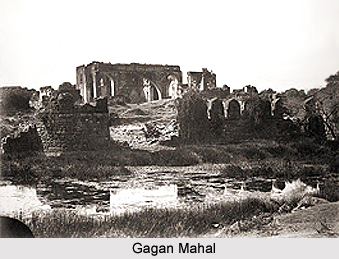 Malik-i-Maidan, also known as Burj-E-Sherz, was built by Ibrahim Adil Shah II. It is situated on the western ramparts of the fort. The structure includes a large cannon with a length of 4.45 m and 1.5 m in diameter. The weight of the cannon is 55 tonnes.
Malik-i-Maidan, also known as Burj-E-Sherz, was built by Ibrahim Adil Shah II. It is situated on the western ramparts of the fort. The structure includes a large cannon with a length of 4.45 m and 1.5 m in diameter. The weight of the cannon is 55 tonnes.
Gagan MahaL
Gagan Mahal was constructed as a royal palace in 1561 by Ali Adil Shah I. It has a durbar hall in the ground floor and three arches. Presently the structure is in ruins.
Sat Manzili
Sat Manzili is a seven storeyed palace which was erected during the rule of Ibrahim II Adil Shah in 1583.
Asar Mahal
Asar Mahal was built by the Adil Shahi dynasty in 1646 and is situated towards the east side of the citadel. The structure is also called Dad Mahal as it was originally utilized as hall of justice. But later it was modified into a reliquary for storing religious relics. The ceiling and walls of the hall have paintings of landscape. Women are not allowed to enter Asar Mahal.
Taj Bavdi
It is a water tank which is also known as Chand Bavdi. The reservoir was built to commemorate the first wife of Ibrahim II named Taj Sultana. The entrance arch includes 2 octagonal towers. The west wing and the east wing of both the towers were utilized as rest houses.


